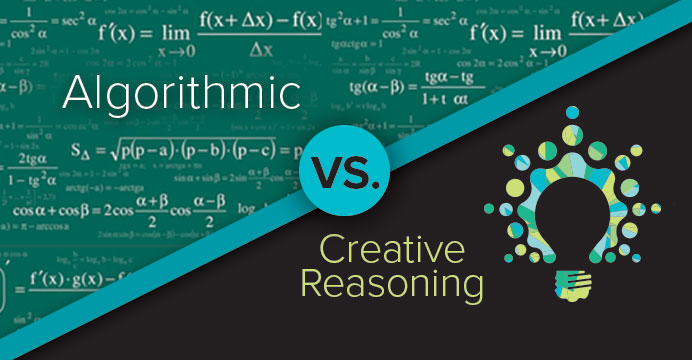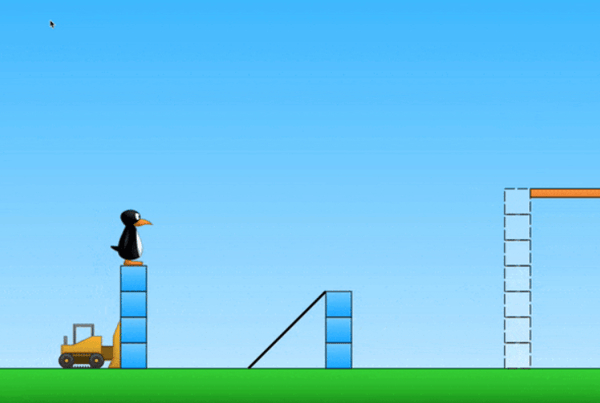Everyone is well aware that video games captivate audiences around the world. By 2015, their annual market share is projected to be $111 billion. If we can understand what makes video games so engaging (their core principles, not superficial mechanics), we can harness these principles to make our schools more effective. From my experience researching and designing math games for MIND Research Institute, here are five basic principles video games embody to create engaging experiences for players:
1. Interactivity with Informative Feedback
Interactivity distinguishes games from other entertainment mediums. It’s also at the core of our most fundamental human process: learning. No one needs to tell a baby how to crawl, walk or talk. They learn on their own by following a natural learning process called the perception-action cycle: they take action, get feedback, course correct and try again. The process cannot occur without feedback. This is where games come in.
Pong was the first commercially successful arcade game. It involves two knobs and simple directions: “Avoid missing ball for high score.”
It was an instant hit. A large part of Pong’s success is that it provides instant, informative feedback to its players. This allows players to go through their natural learning process from the onset of the game. Try to hit the ball, miss (too short), course-correct (move it farther next time), try again. By providing meaningful feedback, the game allows players to learn from their actions. This creates a fundamentally satisfying experience and a solid platform of play from which to expand.
2. Meaningful Goals
At the heart of every game is a goal. People play games because they find the goals meaningful.
Whether it’s finding a key to open a door in Zelda or killing birds to retrieve eggs in Angry Birds, video games are excellent at providing goals that players are intrinsically motivated to engage in. Below is a set of features video game goals typically follow:
- The goal is simple: I can state what the goal is in one sentence.
- The goal is clear: The goal makes sense on a gut level.
- The goal is authentic: The goal is integrated with the task that I engage in to achieve it.
- The goal has a ‘hook’ factor: There is something special, unique, and different that draws players in.
3. The Experience of Growth
Human beings have an innate desire for growth. Video games fulfill this need. They allow a player to start with a rudimentary skill and proceed through a series of increasingly difficult challenges, honing that skill. They experience that growth through a variety of mechanisms, whether it is moving on to the next level or leveling up a character.
Each progression becomes a benchmark for the player – a symbol of their accomplishment. Because the growth was attained as a result of the player’s actions, it brings the player a sense of satisfaction and empowerment. This is a rewarding process and encourages players to continue along the progression.
One of the major pitfalls in school is that, in many cases, students’ need for growth is not being met in their learning. Students will move on to the next lesson before they had an experience of their own growth through mastering a new concept.
The progression is based on an external timeline rather than the result of the student’s actions. The student’s need to experience growth in their learning is not being met and if this process continues, it will generally lead to disengagement.
4. The Feeling of Safety
One of the most important human needs is to feel safe. We put this ahead of just about any other need. When a person feels safe, he or she thinks with the pre-frontal cortex, the part of our brain that we use for higher order thinking. If people don’t feel safe, their fight and flight mechanism is triggered, and they revert to using their limbic brain, their primitive “reptilian” brain, where they make decisions on impulse without thinking. Virtually no learning occurs when a person is in fight-or-flight mode and using their limbic brain.
Games are a great learning environment because, on a basic level, they create a safe space to learn. Games are fundamentally about play.
When people are in the state of play, they are much more willing to be exposed to things they aren’t familiar with and make mistakes without fear of being judged or criticized.
This creates an environment where people can fail and then learn from those failures without triggering fight-or-flight mechanisms. As a result, they remain in a learning mode.
Compare this to the typical classroom, where students often feel judged and criticized if they don’t know something or make a mistake. If they perceive these experiences as safety threats, fight-or-flight will kick in and their learning will be drastically impacted.
5. Engaging Our Senses
Video games engage us on a basic level as an entertainment medium by providing a delightful experience of colors and sounds for our senses (eyes and ears in particular).
Compare the experience of doing math homework on a static black and white piece of paper in a room with a TV on with bright colors and captivating sounds – our brains can’t help but continually be drawn in by the sensory experiences. It requires restriction not to. Of course, education is not entertainment, however, that doesn’t mean educational experiences must be designed without delighting our senses.
The key is to provide just enough sensory engagement to create a pleasant experience, but not so much that it distracts from the learning.
Designing any system that embodies these principles is not simple. It takes a ton of deep thinking, a lot of failure and constant iteration. The resulting product is not a textbook lesson with game mechanics slapped on top, but a fully integrated product designed from the ground up that satisfies people’s basic needs and engages them intrinsically.
Take a look at how the above principles are integrated into our ST Math experience at:




